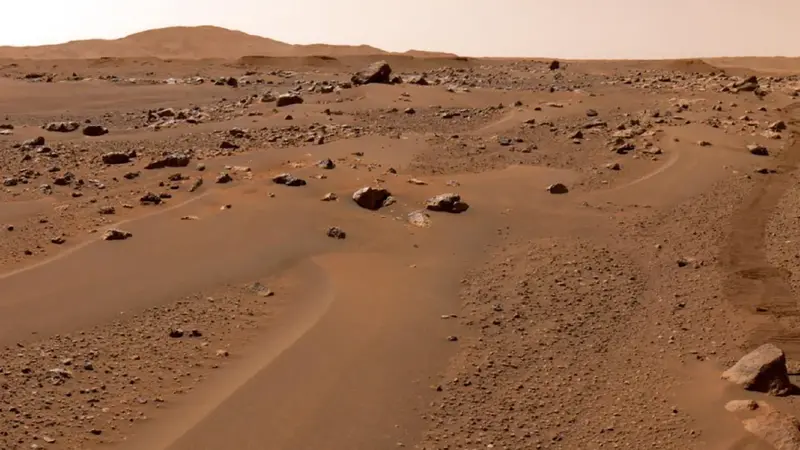A new study has shown that toxic dust Mars make future missions to the Red Planet quite dangerous. In particular, because the silicon, gypsum, perchlorates, and nanophase iron oxides found in Martian dust pose a health threat to the conquerors. Red Planet .
Such conclusions were reached by a team of researchers from the Keck School of Medicine at the University of Southern California (USC) and several other scientific institutions in the United States. The study was led by Dr. Justin Van.
What did the scientists find out?
“The greatest danger is the risk to the lungs. Since the dust is extremely fine, it is expected to remain in the astronauts’ lungs, and some of it will enter the bloodstream,” said Justin Van.
“Astronauts are already at risk of pulmonary fibrosis due to radiation exposure during space flights; many other hazardous factors, such as silicon and iron oxides, can also cause lung diseases,” he added.
The head of the research emphasized that perchlorates (chemical compounds whose toxic concentrations have been found in Martian soil) cause thyroid dysfunction and aplastic anemia – a condition in which the body stops producing enough blood cells.
Considering the duration of the return from Mars to Earth, as well as the delay in establishing communication with our planet, researchers find it extremely important to counter these effects through dust filtration, cabin cleaning, and the use of electrostatic devices that repel dust.
Despite everything, Van remains optimistic: he believes that toxic dust will not make it impossible. missions to Mars .
“Although the dust on Mars is not the most dangerous part of the mission to the Red Planet, it certainly poses a risk to astronauts, but it can be easily avoided if we are properly prepared for it,” said Dr. Wang.
Meanwhile, co-author of the study Brian Hynek, a professor of geological sciences at the University of Boulder, emphasized the broader effects of Martian dust.
“He constantly falls from the sky and covers everything. Every few years, storms occur that engulf the entire planet, covering it with a thick layer,” he said. CNN Professor Heinek stated that spacecraft, vehicles, solar panels, and other equipment “require constant attention to continue functioning.”
“Our” rovers “We have already encountered situations where scientific instruments or entire missions were lost because the solar panels became too dusty to charge the batteries. Such secondary factors will also affect people,” he noted.

What do other scientists think about this?
Julia Cartwright, research associate at the Institute. space The University of Leicester (United Kingdom) claims that combating dust is a major challenge for space exploration.
“As the authors emphasized, dust truly penetrates everywhere, and it behaves somewhat differently than dust on Earth, where most dust particles follow their own transportation path. They tend to have a round shape and gradually wear down over time,” noted the expert.
“For comparison, on the Moon and Mars, you are dealing with very sharp, prickly particles that do not exhibit such activity. This is a problem if they are in the air you breathe. Sharp particles are more likely to cause lung issues,” believes Julia Cartwright.
In her opinion, this process can be compared to the impact of asbestos – a fibrous mineral that was used in building materials until researchers discovered that it poses a risk of lung cancer, mesothelioma, and respiratory heart failure. The scientist also pointed out the issues related to the use of filters for purifying air from unpleasant elements and compounds such as chromium, arsenic, and cadmium.
“If we assume that you are able to filter them out, you still need to develop a strategy for replacing all the filters through which you will have to breathe, and you will need a lot of such filters on board the spacecraft,” says Ms. Cartwright.
Jonathan Eastwood, a professor of space physics at Imperial College London, agreed that complex solutions will be needed to overcome the dangers posed by Martian dust. According to him, the distance from Earth to Mars is so great that the possibility of a quick evacuation back to Earth can be ruled out, so “a full range of medical services is necessary.”
The results of the study were published by the journal GeoHealth.
